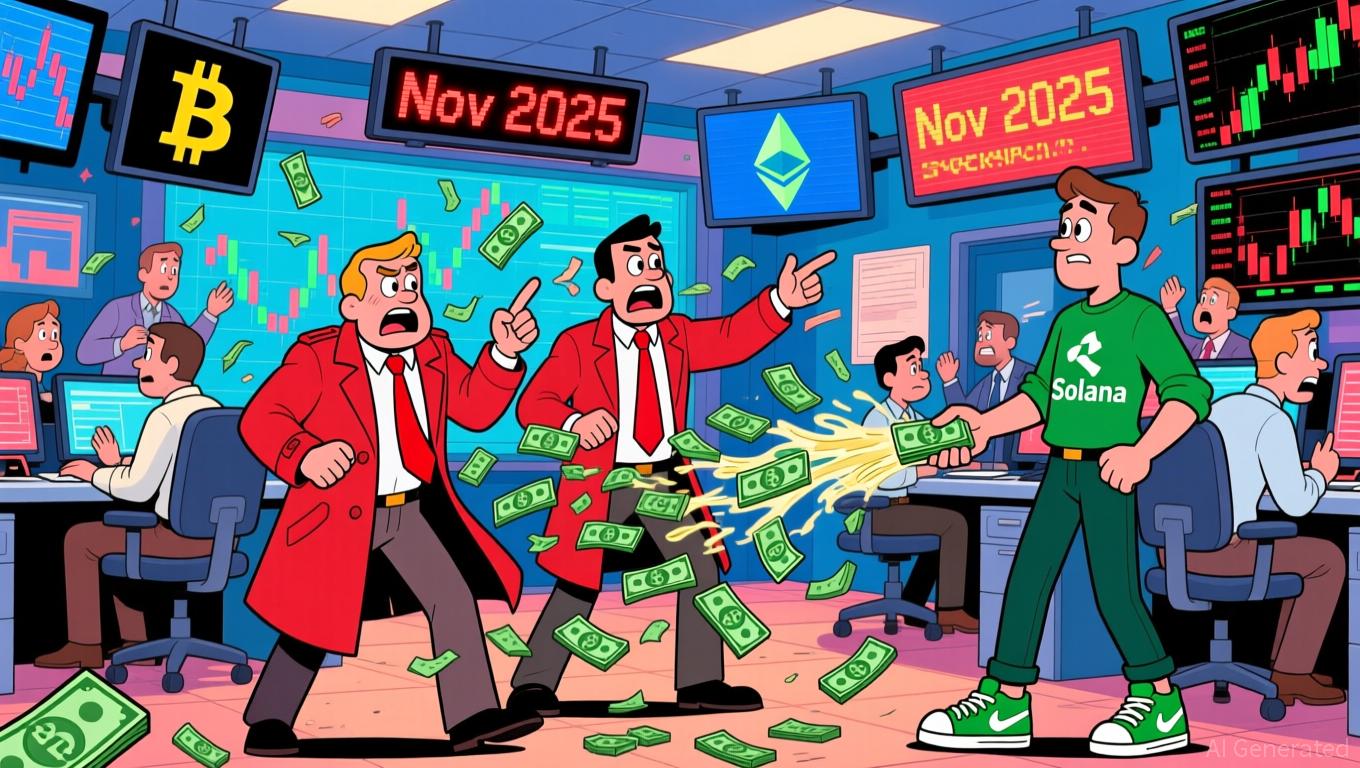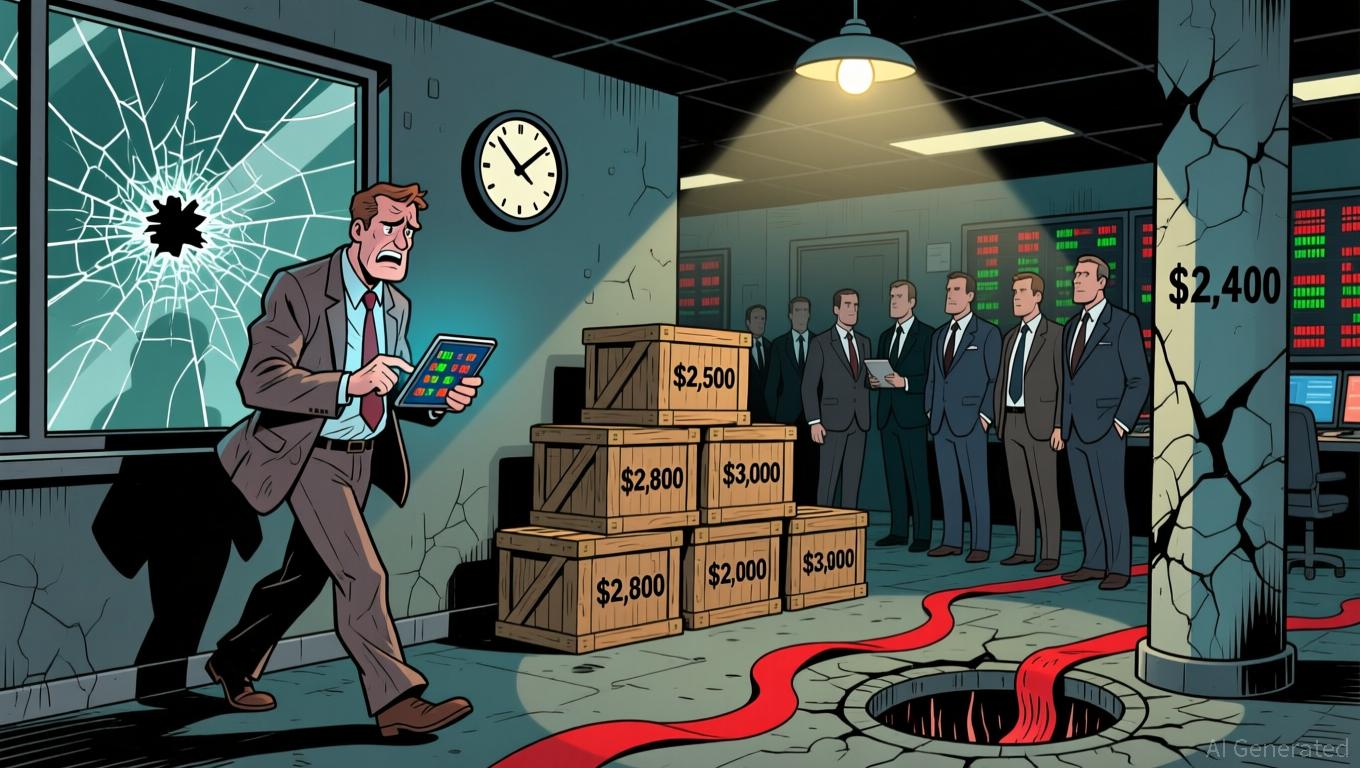The Psychological Factors Influencing Retail Investors’ Actions in Cryptocurrency Markets
- Crypto markets are shaped by behavioral finance, where retail investors drive volatility through FOMO, herd behavior, and overconfidence. - The PENGU token exemplifies this dynamic, surging 480% in July 2025 but plummeting 28.5% by October due to emotional trading cycles. - Social media amplifies emotional contagion, with traders checking prices 14.5 times daily, while financial literacy mitigates bias susceptibility. - Personality traits like neuroticism increase cognitive biases, and speculative narrat
The Psychology Behind Crypto Market Volatility
Cryptocurrency markets are a fascinating case study in behavioral finance, where investor emotions and cognitive biases often take center stage. Unlike traditional financial assets, digital currencies operate around the clock, lack established valuation models, and are heavily influenced by the rapid spread of information on social media. This creates an environment where individual traders—motivated by fear of missing out (FOMO), crowd mentality, and overconfidence—can have a greater impact on price movements than broader economic indicators. The rise and fall of the Pudgy Penguins (PENGU) meme coin, which is linked to the NFT sector, is a prime example of how psychological factors can fuel dramatic swings and irrational market behavior.
Understanding Behavioral Finance in Crypto
Behavioral finance suggests that investors frequently act on emotion rather than logic. In the world of cryptocurrencies, this tendency is heightened by unclear regulations and the lure of quick profits. Research consistently shows that retail crypto investors are especially swayed by social trends and emotional cues. For example, a 2025 study on Bitcoin revealed that market sentiment can significantly influence prices, though this effect is less pronounced among those with higher financial knowledge. Investors with limited financial education are more likely to fall prey to biases such as loss aversion and confirmation bias, leading to impulsive trading decisions.
The journey of the PENGU token in 2025 highlights these dynamics. In July, PENGU’s value soared by 480% to reach $0.041, propelled by endorsements from online personalities and the expansion of the Solana ecosystem. However, by October, the token had dropped by 28.5% as panic selling set in. This pattern of sharp rises and steep declines is not random; it is driven by psychological triggers like FOMO and herd mentality, where investors often buy at market highs and sell during downturns.
The Impact of Social Media and Herd Mentality
Social media platforms intensify emotional trading behaviors. According to a 2025 report, crypto traders check market prices an average of 14.5 times per day, with many displaying signs of compulsive behavior. This constant engagement can lead to a strong identification with investments, causing financial losses to feel like personal setbacks. In the case of PENGU, community sentiment often outweighs the token’s practical utility, with price movements reflecting collective beliefs rather than intrinsic value.
Herd behavior further amplifies market swings. When PENGU peaked at $0.045 in July 2025, a surge of retail investors jumped in, reinforcing the upward trend. Conversely, when the price fell below $0.023 in October, widespread fear triggered a wave of selling. This cycle of exuberance followed by panic is typical of speculative assets, where psychological influences often overshadow fundamental analysis.

The Protective Role of Financial Literacy
Financial education can help shield investors from emotional pitfalls. Studies indicate that those with a stronger grasp of financial concepts are better equipped to handle the unpredictable nature of crypto markets. In more developed economies, clear regulations and investor education have led to more cautious trading behaviors, while in emerging markets, emotional reactions to price changes are more pronounced.
Nonetheless, even knowledgeable investors face uncertainty. The practical uses of PENGU within the Pudgy World ecosystem—such as its integration with Pudgy Party and potential collaborations with major brands—remain unclear. This lack of concrete information forces investors to rely on speculation, leaving room for cognitive biases to influence decisions.
How Personality and Biases Shape Investment Choices
Individual personality traits also play a significant role in trading behavior. For instance, people who are more open to new experiences or prone to anxiety may be more vulnerable to biases like the disposition effect (selling winners too soon and holding onto losers) and anchoring (fixating on specific price levels). These tendencies are especially relevant in the fast-moving crypto space, where frequent price changes can prompt irrational actions.
Forecasts for PENGU’s 2025 performance illustrate these psychological dynamics. While some platforms, such as CoinDCX, predict an average price of $0.068, others like CoinEdition offer a more conservative estimate of $0.0150. These wide-ranging predictions reflect confirmation bias, as investors tend to favor information that supports their existing views.
Conclusion: Mastering the Emotional Landscape of Crypto
The story of PENGU is a microcosm of the larger crypto market, where behavioral finance principles are on full display. Emotional reactions, amplified by social media and ingrained biases, often drive price movements more than underlying fundamentals. For individual investors, success in this arena requires not only financial knowledge but also the ability to manage one’s emotions. Recognizing and addressing personal biases—whether it’s FOMO, overconfidence, or fear of loss—is just as important as technical analysis or staying informed about market news.
As new regulations such as the GENIUS Act and MiCA are introduced, they may help moderate some of the market’s more extreme behaviors. Until then, the crypto landscape will continue to reflect the complexities of human psychology, with every rally and crash telling a story of ambition, anxiety, and the ongoing search for the next big opportunity.
Disclaimer: The content of this article solely reflects the author's opinion and does not represent the platform in any capacity. This article is not intended to serve as a reference for making investment decisions.
You may also like
Bitcoin Updates: Investors Move Away from Bitcoin and Ethereum ETFs While Solana and XRP See Increased Interest
- U.S. Bitcoin and Ethereum ETFs faced $5.58B in November outflows as investors shifted to Solana and XRP funds amid market selloffs. - BlackRock's IBIT led BTC outflows with $355.5M single-day withdrawals, while Fidelity's FETH attracted $95.4M ETH inflows. - Solana ETFs gained $476M since October debut, contrasting BTC/ETH declines, as analysts cite institutional profit-taking and risk-off positioning. - Recent stabilization saw $129M BTC and $78M ETH ETF inflows by Nov 25, though long-term structural ch

AI Industry's Profit Boom Fails to Ease Doubts Over High Valuations Amid Intensifying Sell-Off
- AI sector faces valuation skepticism despite strong earnings, with Nasdaq down 2.2% as investors shift to defensive stocks. - C3.ai's 26% monthly decline highlights challenges: 19% revenue drop, leadership changes, and uncertain Microsoft partnership monetization. - Decentralized GPU platforms like CUDOS Intercloud gain traction by offering cost-effective alternatives to cloud giants through smart contracts. - Palantir contrasts with 62.8% revenue growth and 40.3% net margin, leveraging NVIDIA partnershi

XRP News Today: Abu Dhabi’s Green Light Establishes UAE as a Pioneer in Stablecoin Development
- Ripple's RLUSD stablecoin gains Abu Dhabi regulatory approval as UAE advances digital finance leadership. - ADGM's "Accepted Fiat-Referenced Token" designation enables institutional use for lending and cross-border payments. - RLUSD's $1.2B market cap growth reflects institutional demand, backed by USD reserves and dual blockchain operations. - UAE's ADGM-DIFC regulatory synergy attracts global fintechs , with Ripple expanding partnerships across Africa and Asia. - Regulatory milestones position RLUSD to
Ethereum Updates: Ethereum Drops to $2,800, Prompting Surge in Demand for ZKP's Hardware-Based Presale
- Ethereum's price fell below $2,800, triggering $6.5M liquidations and testing critical support levels amid declining on-chain demand metrics. - Institutional players like BitMine accumulated 3.62M ETH (~$10.4B) despite the selloff, signaling long-term bullish conviction. - ZKP's hardware-driven presale gained traction with $17M in ready-to-ship Proof Pods and Miami Dolphins partnership for privacy-focused sports analytics. - Mutuum Finance's $19M DeFi presale and ZKP's auction model with $50K wallet caps
